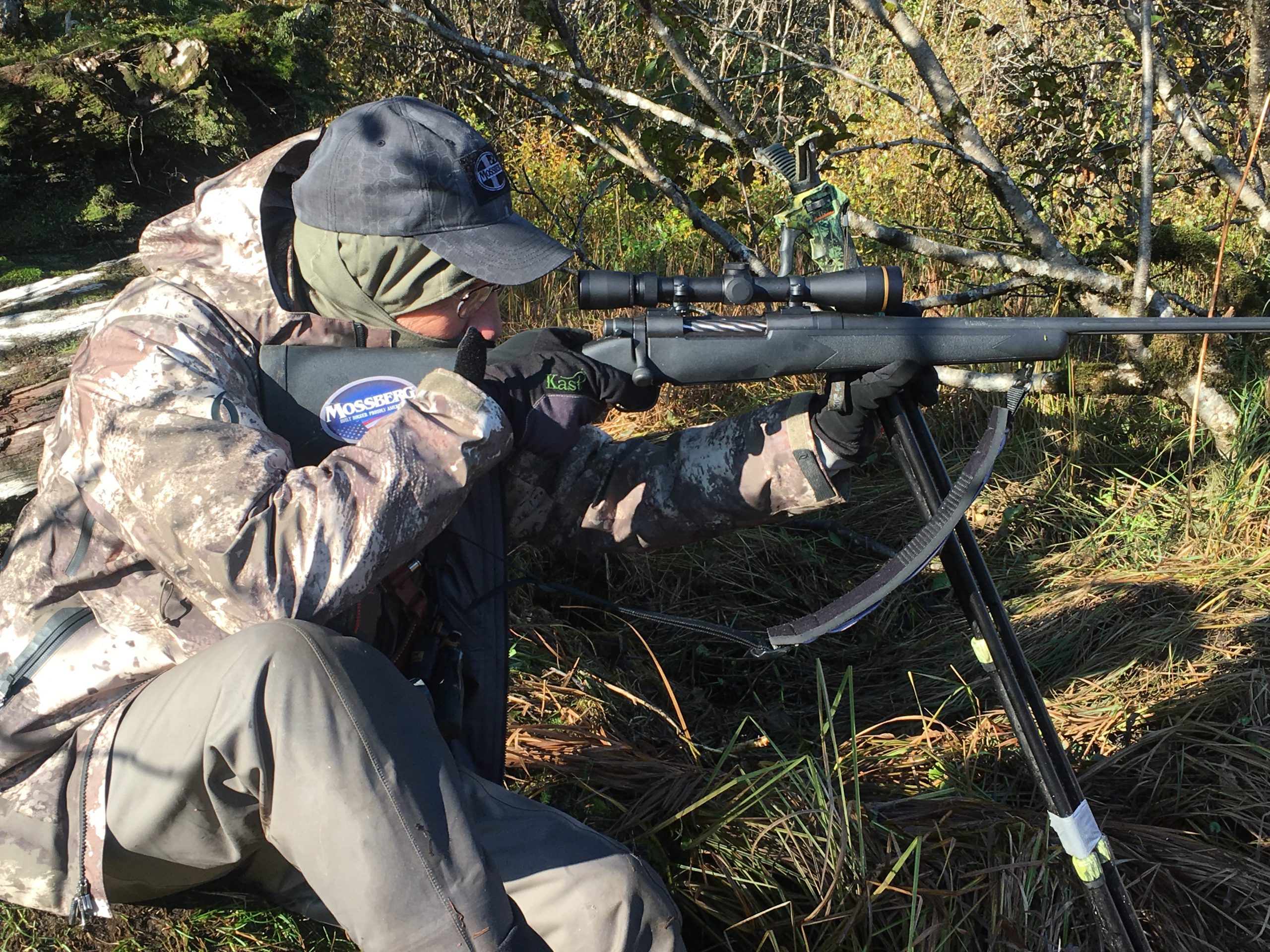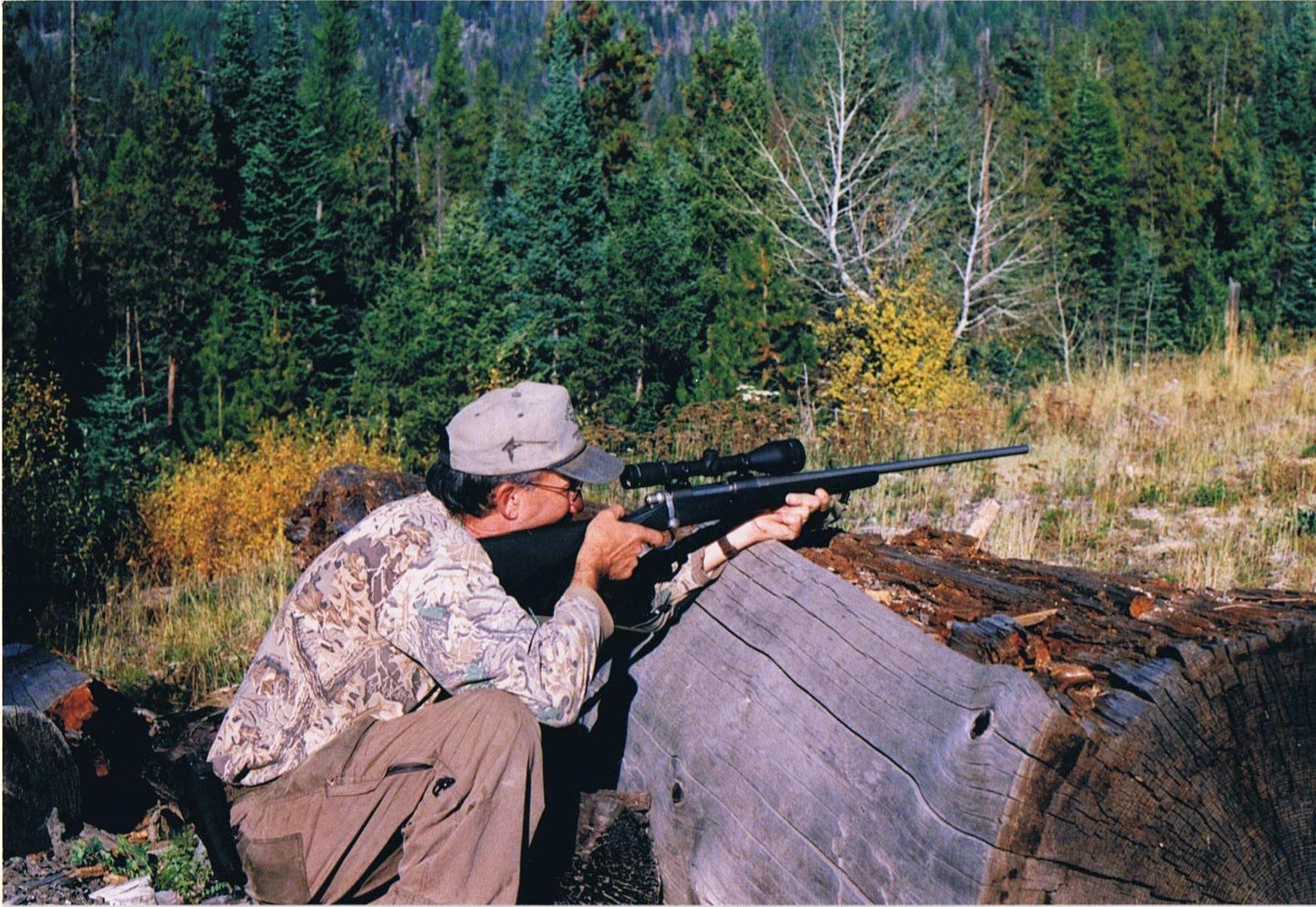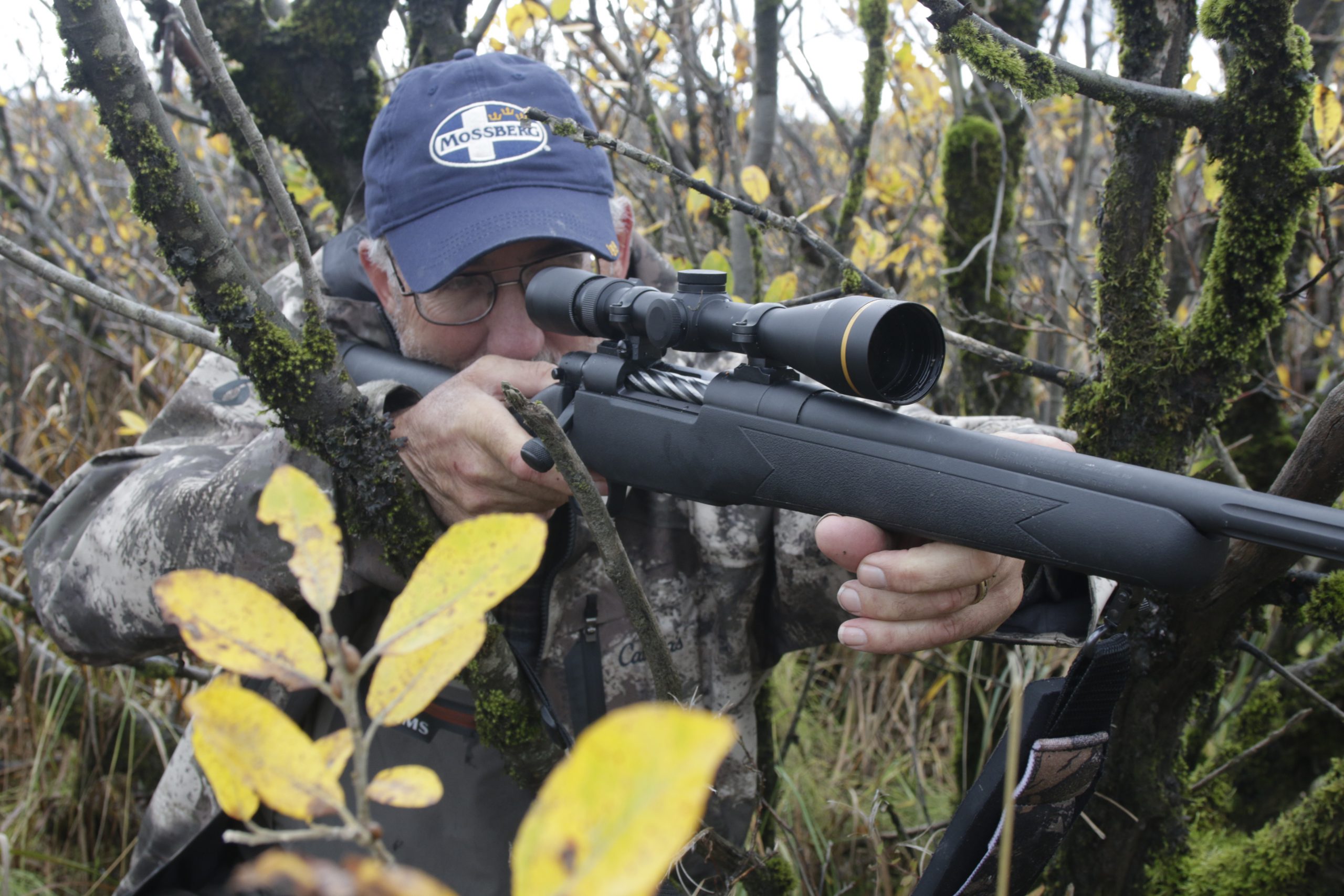By: Tom Claycomb III
Ok, in the last article we talked about “Glassing for Big Game,” which, of course, leads us to today’s topic: Stalking. What’s the purpose of glassing if you don’t know how to go in for the kill?
So, let’s say you’ve been glassing and have seen your quarry. Whether it is an elk, deer, antelope, bear, or moose, it will all somewhat play out the same way. Let’s play through a few different scenarios. Before you take off on a beeline for your animal, let’s develop a game plan. Determine the direction of the wind. To come in with the wind in your face, you may have to circle around from behind the animal. That may mean hiking for a mile or two to come in from the correct direction.

I spotted this buck way out in an open area. But he did have a hillside behind him. So that he wouldn’t see me when I snuck up on him I circle about 1 mile around to the other side, playing the terrain so he wouldn’t see me. Photo by the Author

It appeared that the buck was in the wide open when I glassed it from 800 yards away but now that I’m down where I saw him, the terrain all looks different. Mark the spot he was at before you begin your stalk. Photo by the Author
Another factor, that is just as important as playing the wind, is that you need to play the cover. You may have to circle a mile or more to play the cover. A few years ago, I’d drawn an antelope tag down in the Owyhee’s. I’d been scouting and found a huge buck. Of course, on opening day, I could not find him anywhere. After a few hours, though, I found another decent buck. He was a half mile out on an open flat at the bottom of a ridge.
I’d just flipped my four-wheeler a few weeks prior while scouting. The vehicle landed on top of me, and I’d just barely gotten back to walking. To get the buck, I had to circle waaaay around, so I could use the natural terrain. Even then, I was only able to get within 450 yards of him.
On a funny side note: I’d been seeing a ton of rattlesnakes, so I’d worn some tall, uncomfortable, leather boots. On my last trip packing the buck to the truck, I sat on the tailgate and took off my boots. I’d parked in a grassy spot. As I walked up to unlock the truck, I glanced to make sure a snake hadn’t crawled under it for shade. Sure enough, I slid up the seat and a rattle snake started rattling. I was barefoot and jumped 10 feet high backwards. The seat had pressed against a can of starter fluid. It wasn’t a snake rattling but the can hissing. I about soiled my garments on that one!
Here is another scenario you might encounter. I had an elk tag in the Owyhee’s. I spotted a small herd grazing out in the wide open. They were 1,000 yards out. But luckily, they were grazing fairly fast and soon grazed over a small rise. As soon as they got over the rise, I took out running for them.
I got to the rise and slowly crested it. As fast as they’ been grazing, I was afraid they might be out a-ways. As I crept over the rise, much to my delight, they were less than 40 yards away. Sometimes you get lucky.
So, play the wind and the cover when stalking. And another big deal is to carry a set of shooting sticks. Years ago, I’d tape two ½-inch dowel rods together and used them when antelope hunting. Luckily, now there are a million manufactured shooting sticks on the market. One that I really like is the BOG Adrenaline. You’ll want shooting sticks with adjustable legs so you can use them to shoot sitting down or standing. You’ll want a 2-legged set. They are more stable than a monopod.

About to shoot a brown bear while using a pair of shooting sticks. Photo by RonSpomerOutdoors
I read an article years ago in which the author said that sometimes it’s best to stop 50 yards further away if there is a good rest handy (rock/tree). That always stuck in my mind.
If you don’t have shooting sticks, improvise. Lay your backpack on a rock, a log, or even a buddy. This one won’t work unless your buddy is super stable, but a couple of years ago I was on a Umarex .50 cal. airgun axis deer hunt with Adventures Missions and Retreats. We crawled as close as we could to a herd in the brush. We were in a cactus flat. I couldn’t kneel down for a shot because I couldn’t see over the prickly pears. The guide kneeled down on all fours, and I shot off of his back.

As you get close on your stalk start looking for something to shoot off of. Photo by the Author
Another important move is to mark where your game is before you take off on your stalk. This may sound trivial but it is a huge deal. I can’t tell you how many times I’ve taken off to sneak up on an animal that from a few thousand yards off looked like it was on a wide-open hillside. But as I got closer, the terrain looked like I was in a different world! Suddenly, there were little gullies that I couldn’t notice from far off when glassing. Where’d he go? Did I miss him or did he graze over 50 yards in the brush that I hadn’t noticed?
So right before you take off to try to intercept your game, take notice. Is he near a tall burnt tree? This saved us once on a hunt when I’d glassed a buck 2-miles away. When we got up close, I thought we were within 400 yards but was not sure. I was glad we remembered that he had been by some big, burnt, standing trees and found him.
You can mark a yellow patch of flowers or have your buddy stay below and watch your stalk. To my understanding, it is against the law for you to use radios to zero in on a stalk, but you can use hand signals. Look through your binoculars at your buddy below. If he is pointing right, move to the right. If he is holding his arm straight up, go higher. Have some predetermined hand signals
Two last things.
- Sometimes your game will be out in the wide open and you just can’t get to them.
- You see your game right before dark and they’re 30 minutes away. You can come back the next evening and set up closer so you have time to move in before dark, or you can shoot them at dusk and spend the night out there.
I’ve listed the basics of stalking in this article, but as alluded to, every stalk is different. So be ready to think fast on your feet. Good luck.

